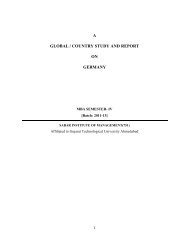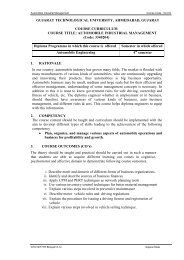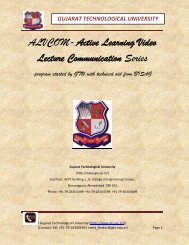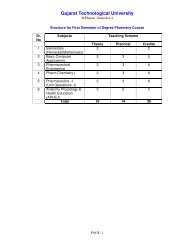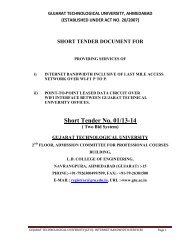778-Som-Lalit Institute Of Business Management - Gujarat ...
778-Som-Lalit Institute Of Business Management - Gujarat ...
778-Som-Lalit Institute Of Business Management - Gujarat ...
You also want an ePaper? Increase the reach of your titles
YUMPU automatically turns print PDFs into web optimized ePapers that Google loves.
The local partners see a joint venture as an attractive mode to profit from the<br />
EIJV partner‘s specific competitive advantages. It is this complementarily of<br />
interest that makes the EIJV appealing especially in markets that are<br />
determined by high industry specific market barriers. Another important<br />
advantage of EIJV is the possible sharing of costs that may be needed for<br />
research and development.<br />
Despite these advantages, EIJV‘s do have some serious drawbacks. A firm<br />
entering a foreign market, through an EIJV, risks giving control of its<br />
technology to his partner. This technology and know-how could be a former<br />
competitive advantage, and may arise the risk of opportunistic behavior by a<br />
joint venture partner, who does not share this knowledge within the JV and<br />
only want to benefit from the others technology as a free-rider.<br />
One more disadvantage of EIJV is objectives of the EIJV partners are<br />
different. It is difficult to reach agreements on how to operate, fund, and<br />
benefit from the venture.<br />
2. Greenfield Entry<br />
<br />
<br />
<br />
In the hierarchical model of market entry modes, the Greenfield entry can be<br />
considered into the high equity based entry modes, because it requires a<br />
major resource assurance in the overseas location (Pan and Tse, 2000). That<br />
recourse promise usually refers to the set up of a new plant, requiring<br />
involvement of capital, human resources and a transfer of the firm‘s know-how<br />
and/or technology. Greenfield entries can be categorized under the term of<br />
wholly owned subsidiaries, where the firm owns 100 percent of the stock.<br />
A wholly owned subsidiary is main two types.<br />
By acquisition (to acquire an established firm), or<br />
By Greenfield entry (the setting up of a new venture).<br />
The common goal behind acquisitions and Greenfield investments is<br />
combination of firm‘s specific advantages with other assets available in the<br />
foreign country. The difference is that a Greenfield entry uses resources of the<br />
investor and combines them with assets acquired locally, whereas an<br />
acquisition uses primarily assets of local firms and combine them with the<br />
77 | P a g e



